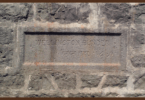If you had to name the top five inventions that changed lives in the average business office, what would be on your list? Would it include the typewriter, the fax machine or the toaster oven? How about the ball point pen or my personal favorite, the gurgling water cooler that serves as the local watering hole for all things related to office gossip.
A Random List of Five Great Business Inventions

What about the stapler or the three-hole punch? What about the computer? What about the convex mirrors that let you see around a corner so you know when your supervisor is on the prowl?
What about the elevator or the air conditioner? Certainly these inventions changed lives in business offices pretty drastically. Without elevators, we’d have no skyscrapers. Without air conditioners, we’d have to bring as extra shirt to work to make it through a hot day.
So, here is a list of a few office gadgets that were once great novelties but are now ingrained in our culture and our office infrastructure:
The Good Old Telephone
Did you know that when the telephone first went commercial (back in 1877 or so), there was no set standard for what to say when the darn thing started ringing. Telephone companies in their infinite wisdom suggested people pick up their phones and say, “Ahoy!” But the suggestion, uhm, hello, didn’t catch on.
Did you also know that Alexander Graham Bell is not universally considered the inventor of the telephone at all. He held the first U.S. patent for the phone, but the first telephone-like device was invented on Staten Island by Italian immigrant Antonio Meucci in 1854, which was 22 years before Bell was awarded his patent.
Of course, the history of the business phone includes some rudimentary steps, but the climb to acceptance was pretty impressive. By 1918, there were more than 10 million phones in service in the United States.
Get The Lead Out: The Pencil
Did you know there was a Pencil Museum in Keswick, Cumbria, in the United Kingdom?
Well, of course there is. That’s because pencil making in Keswick dates back to 1832 and because the factory there was re-named the Cumberland Pencil Company in 1916 and, well, why the heck not?
The precursor to the ubiquitous pencil, of course, can be traced back to Roman times, when lead was used to make marks on papyrus. That’s why we still call the marking substance in pencils lead, even though it is no such thing. The core of a pencil is graphite, not lead.
This thing is cool: Air conditioners
The U.S. Department of Energy calls the air conditioner one of the most important inventions of modern times. And where do you think idea for the air conditioner came from? A doctor from Florida, of course. Dr. John Gorrie was a physician and an inventor, but he was looking for an invention that he thought would be a cure for malaria, as well as, incidentally, keeping people more comfortable.
Before hitting on the idea of using a compressor to create ice, he shipped ice from the frozen north. It made its way south packed in sawdust to keep it from melting.
Least We Forget: Computers
In the long run, computers may prove to be the most astounding invention in the history of business. But did you know that the average smartphone today has more computational power than all the computers used by NASA for the Apollo 11 flight, which landed two men on the moon?
Of course, there’s no denying the improved styling. The on-board Apollo Guidance computer itself weighed 70 pounds and had 64 kilobytes of memory.
On the ground, NASA ran on IBM Systems 360 Model 75 mainframe machines that cost $3.5 million each and could rev up to several hundred thousand computations per second.
Smartphones today – as slim as a piece of cardboard and fitting in a pocket – can execute millions of computations per second.
Going Up In the World: The Elevator
If you consider the basic dumbwaiter, a handy-dandy elevator run with ropes and pulleys, you begin to understand that elevators have not always run on electricity and, as such, they’ve been around a long while – since 236 B.C., in fact.
In those days, elevators were “powered by hundreds of men using winches and counterweights,” which were used in one of the world’s most prominent structures of all time: The Colosseum in Rome.
Yes, elevators were used to hoist animals and gladiators from subterranean rooms under the Colosseum.
Another fine use for the elevator – in this case, the so-called “flying chair” was to hoist one of Louis XV’s mistresses up to her boudoir on the third floor of the Palace of Versailles. Similarly, the king had a “flying table” built at the chateau de Choisy so that meals could be brought up to guests so they could dine privately without inquisitive servants milling about.







Leave a Comment
You must be logged in to post a comment.